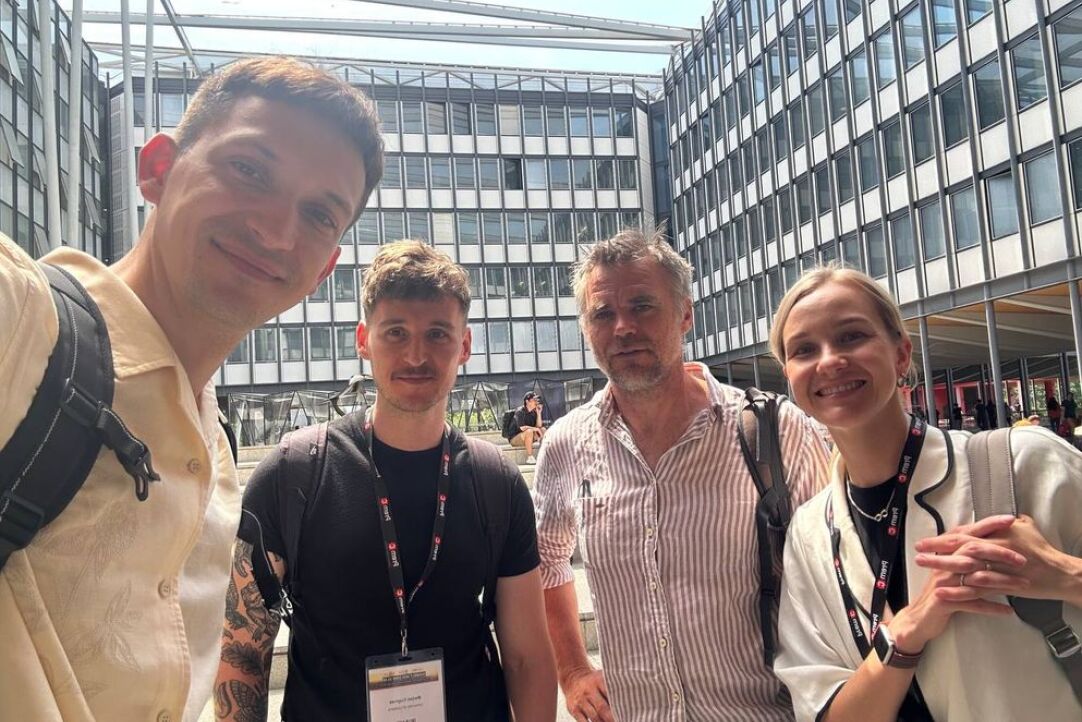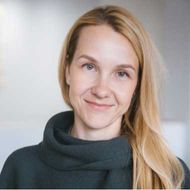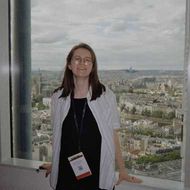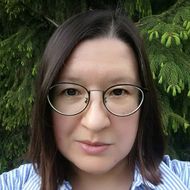ANR-Lab team took part in the Sunbelt network analysis conference in Paris

From June 23 to 29, the annual Sunbelt conference, the largest international conference on social network analysis, was held in Paris, organized by the International Network Researchers Association (INSNA).
The Sunbelt conference traditionally brings together researchers and practitioners from different countries to discuss the latest achievements, methods and applications in the field of network analysis. Sunbelt is a unique platform for presenting your own research, sharing experiences and establishing professional contacts.
The history of the conference dates back to 1981, when a three-day Sunbelt conference was held in Tampa, USA, under the auspices of the University of South Florida. Since then, the conference has been held annually, and in 1998, for the first time, it was held outside of America – in Sitges, Spain. Since then, Sunbelt has been held alternately in the USA and Europe, and in recent years, it has also been held in China and Australia. Gradually, the conference has grown significantly in size – if initially all reports were held in successive sessions and the number of speakers was in the tens, now 6-8 sections are held simultaneously during the week, and the number of participants in each conference exceeds a thousand.
Since 2015, the staff of the International Laboratory for Applied Network Research (ANR-Lab) have been regularly participating in the Sunbelt conference. From 2015 to 2019, the laboratory team visited Brighton (UK), Newport Beach (USA), Beijing (China), Utrecht (Netherlands), Montreal (Canada). In 2020, the conference was held in a virtual format, and since 2021, the online format has been used in offline conferences in Washington (USA), Cairns (Australia), Portland (USA) and Edinburgh (Scotland), where (with the exception of 2023) the laboratory members also spoke online.
This year, the laboratory team also took part in the Sunbelt conference with the financial support from the Faculty of Social Sciences and the Republic of Scientists of the National Research University Higher School of Economics.
About Sunbelt 2025 Conference
The conference in Paris was the 45th Sunbelt conference. Paris and the Sorbonne University as the venue for the conference were preparing to host participants back in 2020, but due to the pandemic, the venue was postponed. The conference was organized by network analysis researchers from leading Parisian universities – Sorbonne University, Sciences Po, Paris 8 University, Paris-Dauphine University – and the National Center for Scientific Research (CNRS) of France.
The conference program traditionally features several types of activities. The first days feature workshops led by renowned experts in the field of social network analysis. The rest of the time, participants can present their papers in online sessions, poster sessions, and traditional sessions. Sunbelt also hosts the presentation of several INSNA awards, and previous year award winners give plenary speeches.
- The Simmel Prize is one of the most prestigious awards in the field of network analysis, given for outstanding contributions to the theory, methodology, or applications of network analysis. The prize is named after Georg Simmel (1858–1918), a German sociologist whose work pioneered the concept of social structure. This year's recipient of the Simmel Prize is Prof. Beate Völker, a sociologist and director of the Netherlands Institute for Crime and Law Enforcement Research (NSCR). At the conference, Beate presented a paper entitled "Blueprints of Cohesion and Conflict. Network Structures, Dynamics, and Social Capital". Prof. Völker studied changes in social networks in the former GDR in relation to social capital. She showed that weak ties can be a liability in totalitarian regimes where trust and openness are limited.
- The Freeman Prize is awarded annually to an outstanding young scholar for significant contributions to the scientific study of social structures. The prize is named after Linton Freeman (1927 – 2018), an American sociologist who stood at the origins of the development of SNA. At this year’s conference, the 2024 laureate Per Block, a sociologist and professor in the Department of Sociology at the University of Zurich, presented his paper. In his paper “Networks of social positions”, he considered how the conceptual approach to interdependence can be extended to larger systems by studying networks of social positions in which individuals or couples form connections, and presented examples related to labour market positions. The 2025 laureate of the prize is Prof. Sofia Boda, a sociologist at the University of Essex. She will give a plenary talk at the next Sunbelt conference.
The conference also announced the winners of two other INSNA awards. The Best Student Paper Award was given to Juliette Saetre, a researcher in the Department of Political and Social Sciences at the European University Institute, for her publication on protest studies [1]. The Richards Prize, named after former INSNA President William Richards, is awarded for achievements in the creation of open-source software for network analysis. This year’s winners were the team behind the Network Canvas project, a free and open-source software for social network research.
Unfortunately, in recent years, the conference has also hosted events in memory of departing scientists from the SNA field. This year, two memorial events were held at once, dedicated to Barry Wellman (1942 – 2024) and Harrison White (1930 – 2024), where colleagues and friends of these scientists spoke. Both meetings were warm and sincere, and it was very interesting to hear the words of remembrance from Mark Granovetter, Jan Fieze, Philippa Pattison, Emily Erickson and many other colleagues and students of these two outstanding professors.
The conference traditionally pays much attention to informal communication and networking – receptions are held for researchers to meet after the main program, during which they can get to know their colleagues and discuss the reports heard at the conference.
The next Sunbelt conference will be held from June 22 to 28, 2026 in Daytona Beach (USA).
About the participation of ANR-Lab team
This year, several laboratory members presented their reports at the conference. In person in Paris, Daria Maltseva, PhD in Sociology, Head of the International Laboratory for Applied Network Research, and Apollinaria Ermolaeva, a research assistant at the laboratory, presented their reports.
- Daria Maltseva presented a report on "AI-Assisted Tools in Bibliometric Network Analysis", where she showed the results of a study aimed at studying how AI-based methods and tools can improve research in the field of bibliometric network analysis at three key stages of the workflow (data collection, pre-processing, and analysis). Daria presented the results of a bibliometric analysis of literature on the topic of integrating AI and bibliometric network analysis based on an analysis of scientific publications and a comparative analysis of various bibliometric tools (bibliometric databases, software for bibliometric network analysis, tools based on artificial intelligence).
- Apollinaria Ermolaeva spoke at the conference on the topics of "Network dynamics and adolescent risk behavior: the case of Russian vocational schools" and "Interethnic Relations in Schools with Different Ethnic Composition".
Several other team members took part in the online format: Irina Pavlova presented "Developments in wellbeing studies through a prism of the bibliometric network analysis", Aryuna Kim - "Adaptation of migrant young mothers: the case of Russian migrants after February 2022", and Natalia Matveeva, together with student Daniil Mikhailenko, presented a report on the topic of "International trade in small Post-Soviet countries: which factors determine it?"

In addition to my section, I traditionally attended the section devoted to the study of scientific networks (Scientific Collaboration Networks: data collection and quality, methods, models, and empirical application), which was organized by colleagues from the University of Ljubljana, Luka Kronegger and Marjan Cugmas. It was interesting to meet Alejandro Espinosa-Rada, associate professor of the Department of Sociology at the Pontifical Catholic University of Chile and visiting professor at the Center for Sociological Research at the Catholic University of Leuven in Belgium. It turned out that Alejandro cites my work with Prof. Vladimir Batagelj, which was very nice! I also listened with great interest to the reports of the section "Tools and Data for Social Network Analysis", where some new tools and techniques for network analysis were presented, including new SNA packages in the R programming language.
I noted for myself that this year there were quite a lot of sections and events devoted to qualitative network analysis, mixing methods and theoretical developments in network analysis. I think that this speaks to the development of network analysis as a scientific discipline. In the section "The legacy of Harrison White", I really liked the report of Jan Fuese, a professor of sociology with a specialization in the field of computational social sciences and qualitative methods at the University of Leipzig. In his report "What would Harrison say? About recent trends in social network research" he talked about the main trends in the field of SNA, and as a researcher well acquainted with the work of Harrison White, he expressed his opinion on how well these trends fit into the scientist's agenda.
I am pleased (and proud) to note the presentation by Stepan Zaretsky, a former student of our Master's program (MASNA, now DASS), now a PhD student at the Faculty of Sociology of the University of Groningen, at the section on statistical approaches to modeling network dynamics. In his report "Modeling Network Dynamics with Latent Cohesive Subgroups" Stepan presented the results of his dissertation, which I hope he will defend soon.
In general, the number of sections at the conference is quite large, as is the number of familiar researchers whose reports I wanted to listen to, so sometimes I had to switch between sections and presentations quite intensively. It is very interesting to track how the research areas of familiar colleagues, whose work we have been observing for more than 10 years, are developing and changing.
Finally, I was happy to meet our professors from the University of Ljubljana, Anuška Ferligoj and Vladimir Batagelj, and their colleagues whom I have already mentioned, as well as other familiar researchers from the field of network analysis, with whom we meet at least once every few years at conferences. I look forward to more meetings!

During the first two days, I attended workshops at the Sciences Po. The first workshop was about mediation and moderation in exponential random graph models. This is the method I worked with in my bachelor's thesis, the results of which I presented at the conference. The second workshop was about modeling network dynamics using stochastic actor-oriented modeling. This is the method I am currently using in my master's thesis, studying the spread of risky behavior among adolescents. The opportunity to discuss details directly with the author was invaluable: many technical issues were clarified, and his recommendations will help to adjust further analysis.
The remaining days of the conference were held at the Sorbonne. I tried to attend as many sections as possible and often thought that I could use a time flywheel. I found the reports in the section on intergroup relations to be the most interesting. I study them too, so it was interesting to learn about the results of other studies.
On Thursday and Saturday, I presented the papers “Interethnic Relations in Schools with Different Ethnic Composition” and “Network Dynamics and Adolescent Risk Behavior: the Case of Russian Vocational Schools” in the sections on adolescent networks and social influence. For me, as a novice researcher, this was especially exciting, because I was speaking to scientists who had achieved success in the discipline. The audience was positive and open to dialogue. I plan to take all the comments and suggestions into account when finalizing the research.
I was very impressed by the memorials in memory of Barry Wellman and Harrison White, which took place on Thursday evening. Both researchers made a huge contribution to the development of network analysis. Barry Wellman is the founder of INSNA (International Network for Social Network Analysis), and Harrison White is one of the founders of relational sociology. Both, unfortunately, passed away in 2024. The memorials featured speeches by Wellman's and White's students, colleagues, and friends, who were themselves eminent researchers (for example, Mark Granovetter, known for his theory of the strength of weak ties). I found it very valuable to learn about them as people, not just as names quoted in parentheses. For example, Barry Wellman loved to meet young researchers at conferences and was hard to find sitting in the audience, and Harrison White once taught a course in which he made students read books that he hadn't read himself simply because he had long wanted to read them. I think it's important to know the stories of the people who are doing the science you love.

A special feature of the Sunbelt conference is that there is one day in the program that is reserved for online presentations. There are no other events on this day, and all participants can connect and listen to the participants online. This year, it was not very easy to get a visa, for this it was necessary to submit documents quite a long time in advance, so I took part in the online session. Of course, physical participation at the conference venues is much more interesting and productive, since the main communication takes place offline. However, the very fact that in any case there is an opportunity to take part in such a significant event, extremely important for the community of network researchers, and also to present your work on the topic of bibliometric network analysis, dedicated to mapping the scientific field of well-being studies, is very valuable.
[1] Saetre, J. 2025 How Protests Spread: Diasporas, Wide Bridges, and the Transnational Diffusion (https://www.journals.uchicago.edu/doi/10.1086/735430) American Journal of Sociology . 131(1): 1–48.
